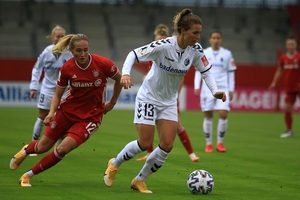Virtual Classroom | The best way to teach kids online
The pandemic has brought significant changes to the education system, including the widespread adoption of virtual classrooms. While the transition to online learning has been challenging for both students and teachers, with the right approach virtual classrooms can provide kids with an engaging, interactive, and productive learning experience.
The Digital Samba virtual classrooms offer a solution that can be just as effective as traditional in-person instruction by keeping children engaged in an online environment. There are several factors that are necessary to make this happen.
Interactivity: Engaging Students in Virtual Settings
Interactivity is a crucial component in a child’s success within an online environment. This can be achieved through online discussions, quizzes, surveys, and interactive presentations that provide opportunities for students to ask questions, share opinions, and collaborate with their peers. Research has shown that increased interactivity in online learning environments can lead to increased student engagement and motivation, resulting in better academic performance.
Structure and Routine: Maintaining a Productive Learning Environment
Providing a structured and routine learning environment is crucial for children in an online setting. This includes clear expectations, a well-defined schedule, and dedicated time for breaks and physical activity. A structured environment helps children stay organized and focused, leading to improved academic performance and reduced stress and anxiety.
Technology: Enhancing the Online Learning Experience
The effective use of technology is essential in online education for children. Tools and platforms that enhance the learning experience, such as digital whiteboards, video conferencing, and screen sharing, can make online learning fun, engaging, and interactive. Using technology in online learning can also provide opportunities for real-time assessments, which can be a valuable tool for tracking student progress and providing feedback.
Assessment and Feedback: Measuring Progress and Improving Performance
Assessment and feedback are key components of the learning process and are equally important in online education. Regular assessments, both formative and summative, help track progress and identify areas for improvement. Providing constructive feedback to students helps them understand their strengths and weaknesses and can serve as a motivator for improvement. Research has shown that students who receive regular feedback in an online learning environment have higher levels of motivation, leading to better academic performance.
Advantages of Virtual Classrooms for Children
Flexibility and Convenience
One of the primary benefits of virtual classrooms is the flexibility and convenience they offer. Children can attend classes from anywhere with an internet connection, eliminating the need for a daily commute. This allows them to balance their learning with other activities, such as work or family commitments.
Personalized Learning
Virtual classrooms provide an opportunity for personalized learning, where students can work at their own pace and receive individualized attention from their teachers. This can be particularly beneficial for children who struggle in a traditional classroom setting.
Access to Resources
Virtual classrooms offer students access to a wealth of online resources, such as videos, simulations, and interactive quizzes, which can make learning more engaging and effective. Additionally, students can access these resources at any time, allowing them to review the material and reinforce their understanding.
Improved Collaboration
Virtual classrooms can facilitate collaboration among students, even when they are in different locations. Through online discussion forums, group projects, and live video conferencing, children can work together and learn from each other, building important teamwork and communication skills.
Increased Engagement
Studies have shown that virtual learning can increase student engagement, as students are often more motivated to participate in online activities than in traditional classroom lessons. The use of technology, such as virtual reality and gamification, can also make learning more fun and exciting for children.
Improved Access to Education
Virtual classrooms can provide children with access to education, especially in rural or remote areas where traditional schools may not be available. This can help to close the educational achievement gap and provide children with the opportunities they need to succeed.
Cost-Effective
Virtual classrooms can also be a more cost-effective alternative to traditional classrooms, as they eliminate the need for expensive infrastructure and resources, such as textbooks and equipment. Additionally, virtual classrooms can reduce the cost of teacher salaries, as one teacher can serve multiple classes and schools.
Learn how to make virtual learning environments safe and conducive.
Challenges of Virtual Classrooms for Children
While virtual classrooms offer numerous benefits for children, there are also some challenges that must be addressed to ensure their success.
Technical Difficulties
Technical difficulties, such as internet connectivity issues, can disrupt the learning experience and cause frustration for students and teachers. Schools and families must have access to reliable technology and support to overcome these challenges.
Isolation
Virtual classrooms can lead to feelings of isolation, as children may not have the same level of social interaction as they would in a traditional classroom setting. This can have a negative impact on their emotional and mental well-being.
Lack of Physical Activity
Virtual classrooms can also limit children’s physical activity, as they are not required to move around the classroom or engage in physical activity during breaks. This can have negative impacts on their physical health and well-being.
Conclusion
Virtual classrooms became a necessity during the pandemic, requiring a new approach to teaching. However, with the right approach, virtual classrooms can provide kids with a fun, engaging, and effective learning experience. Interactivity, structure and routine, the use of technology, and assessment and feedback are crucial elements in making online learning a success. The Digital Samba virtual offer a solution that can help kids continue to learn and grow, even in the absence of traditional classrooms.




